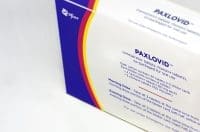Engage patients in healthcare decisions to ensure patient autonomy.
Takeaways:
- Patients should be actively involved in making decisions about their care.
- Shared decision making is a process by which nurses help patients make informed healthcare decisions.
- Shared decision making improves patient autonomy.
Patients have to make many healthcare decisions during hospital stays and throughout care. These decisions can vary dramatically in context and severity. For example, one patient may need to choose the type of facility he or she will be discharged to and another may need to make a simple medication or activity decision. Nurses understand the importance of patient autonomy and that ultimately all decisions are up to the patient. However, many barriers can make that process difficult. (See Decision-making barriers.)
A 2017 study by Burke and colleagues of 54 patients and professional caregivers making decisions about skilled care after hospital discharge found that patients frequently felt passive in their care decision-making and felt an overall lack of autonomy. Nurses can help change this by practicing shared decision making (SDM), which engages patients in making active choices about their care. As SDM becomes standard in healthcare organizations, various decision-making models are being developed, and the National Quality Forum is designing certification standards for patient decision aids used in the United States. Implementing a decision-making model that includes patients can improve care quality.
Patient autonomy is crucial to patient-centered care, but several barriers can prevent patients from participating in healthcare decisions. Those barriers include:
- insufficient knowledge
- limited time
- lack of experience
- no family support
- reduced mental capacity
- inadequate resources.
Nurses also may encounter barriers, including limited time and lack of knowledge and confidence about certain topics or resources. In addition, family members may disagree with a patient’s decision or doubt the provided information.
SDM: A closer look
According to the National Learning Consortium, SDM is the process by which patients actively work with a nurse or other healthcare professional to make informed decisions about their healthcare options. As part of patient-centered care, SDM is critical when a patient is faced with multiple healthcare options with varied benefits and risks. SDM is associated with increased patient knowledge, satisfaction, and confidence with healthcare decisions. In addition, researchers have found that it improves patient autonomy and disease self-management.
SDM stems from the 1978 International Conference on Primary Health Care Declaration of Alma-Ata that recognized the importance of patients actively participating in all aspects of their care, including planning, organizing, and implementing care decisions. Since then, several steps have been taken in support of SDM. For example, the National Academies of Sciences, Engineering, and Medicine recommends adopting SDM into patient care delivery, the Agency for Healthcare Research and Quality (AHRQ) notes the importance of providing patients and their families with evidence-based care options in accessible formats that take into account individual learning and cultural needs, and the Patient Protection and Affordable Care Act supports SDM that includes the healthcare team, patients, and caregivers. In addition, Quality and Safety Education for Nurses competencies include preparing nurses to foster and support SDM. SDM also is supported by the American Nurses Association Code of Ethics for Nurses with Interpretive Statements and Nursing Scope and Standards of Practice.
To facilitate SDM, nurses need to understand the process. Truglio-Londrigan has identified nine competencies—reflective practice, nurse-patient relationship, communication, assessment, cultural knowing, teaching and learning, ethical knowing, interprofessional practice, and negotiation—necessary for nurses to practice SDM. (See Build your competence.) Combining these competencies with an effective decision-making model helps ensure that care remains patient centered.
To ensure patient participation in shared decision making (SDM), build these competencies:
- Reflective practice: Engage in reflection. Patient and nurse reflection should occur while the SDM process is underway and after it’s complete to identify areas of strength and opportunities to improve.
- Nurse-patient relationship: Be mindful of patients’ goals and needs; doing so will help you develop meaningful, therapeutic relationships that foster SDM.
- Communication: Communicate effectively with patients, families, communities, interprofessional teams, and organization leadership to ensure that patient needs are heard and shared with the healthcare team.
- Assessment: Assess the patient’s ability to engage in SDM so you can modify resources and techniques based on individual patient characteristics. For example, consider the patient’s developmental stage, literacy level, disease severity, and treatment options to guide SDM planning and engagement.
- Cultural knowing: Respect and value individual patients’ cultural differences so you can identify healthcare choices that align with their beliefs.
- Teaching and learning: Design a teaching plan that accounts for patients’ specific needs (developmental age, literacy level, cultural considerations, primary language, learning style, and any needed accommodations).
- Ethical knowing: Understand and balance ethical principles while engaging in SDM. For example, a patient’s choice may conflict with your values and beliefs, but you’ll still need to ensure that the patient is fully supported.
- Interprofessional practice: Nurses facilitate SDM with the healthcare team as well as the patient, so take into consideration each team member’s expertise and how it supports the best patient care.
- Negotiation: When conflict arises, work with the patient, family members, and healthcare team to facilitate understanding of opposing views, identify commonalities, and promote a shared decision. Use strategies that foster collaborative agreements and be open to seeking an understanding of each person’s views.
The SHARE Approach model
The AHRQ SHARE Approach decision-making model is designed to guide SDM by examining and analyzing healthcare option advantages, disadvantages, and potential risks. The options are identified via meaningful patient-nurse dialogue that allows the patient to openly express what’s most important to him or her. The model comprises this five-step process:
Seek your patient’s participation.
Help your patient explore and compare treatment options.
Assess your patient’s values and preferences.
Reach a decision with your patient.
Evaluate your patient’s decision.
According to AHRQ, benefits of the SHARE Approach include increased patient satisfaction resulting from improved care quality and a good care experience. The model also helps build trust between healthcare professionals and patients. AHRQ offers a workshop curriculum (User’s Guide for Clinical Teams) with resources and tools for teaching nurses how to implement the SHARE Approach.
Putting SDM into practice starts with leadership buy-in and a well-coordinated plan. In addition, the AHRQ user’s guide recommends creating an implementation team, adopting an approach that fits your practice, providing staff training and ongoing support, taking an incremental approach by starting small and then increasing over time, creating a physical space for SDM, building a library of evidence-based resources and decision aids, integrating SDM processes into daily care, and evaluating ongoing SDM implementation.
Follow the evidence
Nurses who strive to provide quality care should follow the evidence that leads to best practices. A team-based approach to SDM enables patients to examine their options and actively participate in their healthcare. The result is improved outcomes, care quality, and patient satisfaction.
Christy L. Skelly, Carrie Ann Hall, and Carrie R. Risher are assistant professors of nursing at Florida Southern College in Lakeland.
References
Agency for Healthcare Research and Quality. The SHARE approach: A model for shared decisionmaking—Fact sheet. September 2016. ahrq.gov/health-literacy/curriculum-tools/shareddecisionmaking/tools/sharefactsheet/index.html
American Nurses Association. Code of Ethics for Nurses with Interpretive Statements. January 2015. nursingworld.org/practice-policy/nursing-excellence/ethics/code-of-ethics-for-nurses/coe-view-only
American Nurses Association. Nursing: Scope and Standards of Practice. 3rd ed. Silver Spring, MD: American Nurses Association; 2015.
Burke RE, Jones J, Lawrence E, et al. Evaluating the quality of patient decision-making regarding post-acute care. J Gen Intern Med. 2018;33(5):678-84.
Cronenwett L, Sherwood G, Barnsteiner J, et al. Quality and safety education for nurses. Nurs Outlook. 2007;55(3):122-31.
Elwyn G, Burstin H, Barry MJ, et al. A proposal for the development of national certification standards for patient decision aids in the US. Health Policy. 2018;122(7):703-6.
Institute of Medicine. Crossing the quality chasm: A new health system for the 21st century. Washington, DC: National Academies Press; 2001.
Meline DL, Brehm SN. Sustaining shared decision making: A biennial task force process. Am Nurse Today 2015;10(3):52-4.
National Learning Consortium. Fact sheet: Shared decision making. December 2013. healthit.gov/sites/default/files/nlc_shared_decision_making_fact_sheet.pdf
Patient Protection and Affordable Care Act (PPACA). Section 3506 of the PPACA amended in Section §936 [42 USC §299b-36] and titled – Program to facilitate shared decisionmaking (2010). govinfo.gov/content/pkg/PLAW-111publ148/html/PLAW-111publ148.htm
Truglio-Londrigan M. Shared decision making through reflective practice: Part I. MEDSURG Nurs. 2016;25(4):260-4.
Truglio-Londrigan M. Shared decision making through reflective practice: Part II. MEDSURG Nurs. 2016;25(5):341-5, 350.
World Health Organization. Declaration of Alma-Ata. 1978. who.int/publications/almaata_declaration_en.pdf


















